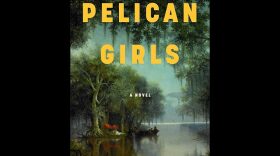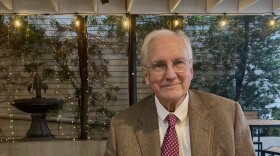-
-
The revival marks the largest comeback attempt to date for the 84-year-old landmark.
-
This is American Routes, I’m Nick Spitzer. We’ll be traveling to southern France to meet that most American of cartoonists: the often beloved and sometimes reviled Robert Crumb, with his social criticism, politically incorrect and sexually explicit characters: Fritz the Cat and Mr. Natural, Flakey Foont and Angelfood McSpade–drawings and earthy dramas that made him the comic book king of the high hippie era. But R. Crumb is also deeply drawn to the nostalgia of old America heard on 78 RPM records. He’s collected over seven thousand of the platters.
-
-
Baton Rouge guitarist, harp player and singer Kenny Neal is a second-generation leader in the city’s blues scene, born into a family of ten children. Kenny’s father Raful Neal was a noted harmonica player, influenced by Little Walter and played in a local band with Buddy Guy. Raful Neal’s friend Slim Harpo gave son Kenny Neal his first harmonica at age three. Kenny started playing bass for his father at thirteen and went on to Buddy Guy’s band. Later, he recruited his siblings to form the Neal Brothers Blues Band. In 1989, Kenny recorded a breakout swamp blues LP Big News from Baton Rouge for Alligator Records. His fine guitar work and harmonica, as well as authoritative voice, carried him forward making sixteen more records. Kenny carries on the Baton Rouge blues tradition. Let’s go to to the Juke Joint stage at West Baton Rouge Parish Museum with Kenny Neal.
-
-
Evan Christopher began playing clarinet in junior high school in Long Beach, CA. His first introduction to New Orleans music was hearing Louis Armstrong's Hot Fives and Sevens with Johnny Dodds and Artie Shaw on his dad’s records. Evan moved to New Orleans in his early 20s. Here he worked as a steamboat clarinetist by day and explored the music scene on Frenchmen Street by night. He went on to collaborate with Tom McDermott, Al Hirt, the New Orleans Nightcrawlers, Galactic, and others. His “Clarinet Road” led him from Socal to New Orleans, San Antonio, Paris, and he now resides in New York City. Evan told us how he came to understand the music of New Orleans.
-
-
Donald Harrison is known as a modern jazz saxophonist here in New Orleans, and although he grew up hearing parades and funerals in his youth, his major influence was at the New Orleans Center for the Creative Arts, under his teachers like Kidd Jordan and Alvin Batiste. Harrison spent years in New York City as one of Art Blakey’s Jazz Messengers and later co-lead a modern jazz band in New York with New Orleans trumpet player Terence Blanchard. But Harrison never forgot his New Orleans roots…a place where jazz is still dance music. He also came home to his father Donald Harrison, Sr.’s traditions of song and street performance, suited up in sequins and feathers as a Mardi Gras Indian chief leading the Guardians of the Flame. Donald Harrison told me that his rooted, but worldly musical eclecticism began at home.
-
-
The late Dr. Lonnie Smith of B-3 organ fame was a native of Buffalo, NY, where he got noticed sitting in with Jack McDuff. Lonnie Smith moved to New York City to join George Benson’s quartet and scored a solo record deal with Columbia. “Doc” Smith mixed jazz, soul, blues and pop in his own compositions, as well as covers of Coltrane, Hendrix and Beck. Growing up, Lonnie Smith sang gospel songs in church and at home. His brothers played guitar and drums. Lonnie’s first instrument came to him magically, he says, “almost like in a movie.”
-
The Historic New Orleans Collection spotlights former Congressman Bob Livingston.
















